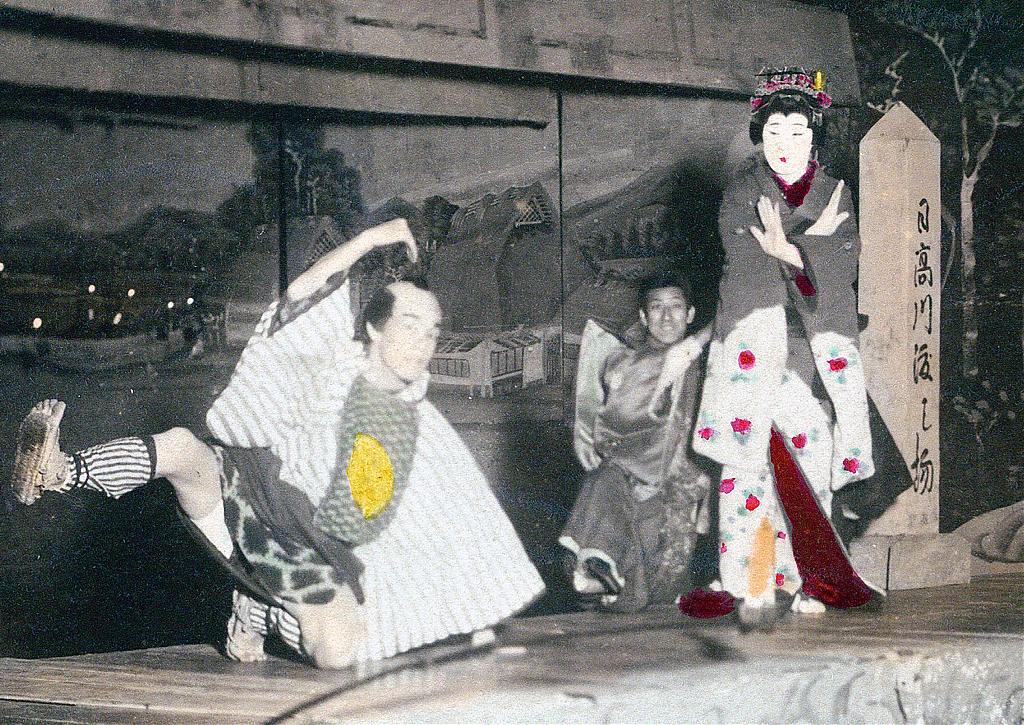This very rare photograph shows actors performing on stage in a theater filled with children and lighted by electric lamps.
Two musicians can be seen at the far right. A stage assistant (後見, Koken) in black sits in the front holding a pole. Another assistant sits behind the actor playing the woman. Although clearly in plain sight, Japanese audiences had grown used to the idea that Koken were “invisible”. The black clothing reinforced this concept.
The sign next to the actor who plays the woman says “Hidakagawa Ferry Landing” (日高川渡し場, Hidakagawa Watashiba). This identifies the play as Hidakagawa Iriaizakura (日高川入相花王, The Cherry Trees Along the Hidaka River), originally a Bunraku puppet theater play.

Hidakagawa Iriaizakura tells the story of a woman called Kiyohime who falls in love with the priest Anchin. He rejects her love and instructs a ferryman to not let her cross the Hidaka River. Enraged, Kiyohime jumps into the river where she is transformed into a violent serpent. She crosses the river and finds Anchin hiding in the bell of Dojoji temple. She wraps herself around the giant bell and burns both the bell and Anchin in a sea of fire.
Dojoji temple actually exists and is located in Hidakagawa-cho, Hidaka-gun, Wakayama Prefecture. Hidakagawa Iriaizakura was a popular story and the scene of Kiyohime and the ferryman can be seen on a number of Ukiyoe prints.
The video clip below shows a performance of the original Bunraku version.
Notes
1 I have as yet been unable to attribute this image, but it features the number 770 in the negative (lower left corner).
2 For more information about Japanese theater, visit the site of the National Theater of Japan (Japanese and English).
3 The Tonda Traditional Bunraku Puppet Troupe is one of several Bunraku Troupes that perform Hidakagawa Iriaizakura. They have been designated an Intangible Cultural Treasure.
Published
Updated
Reader Supported
Old Photos of Japan aims to be your personal museum for Japan's visual heritage and to bring the experiences of everyday life in old Japan to you.
To enhance our understanding of Japanese culture and society I track down, acquire, archive, and research images of everyday life, and give them context.
I share what I have found for free on this site, without ads or selling your data.
Your support helps me to continue doing so, and ensures that this exceptional visual heritage will not be lost and forgotten.
Thank you,
Kjeld Duits
Reference for Citations
Duits, Kjeld (). 1900s: Theater Performance, OLD PHOTOS of JAPAN. Retrieved on December 14, 2025 (GMT) from https://www.oldphotosjapan.com/photos/280/theater-performance




There are currently no comments on this article.